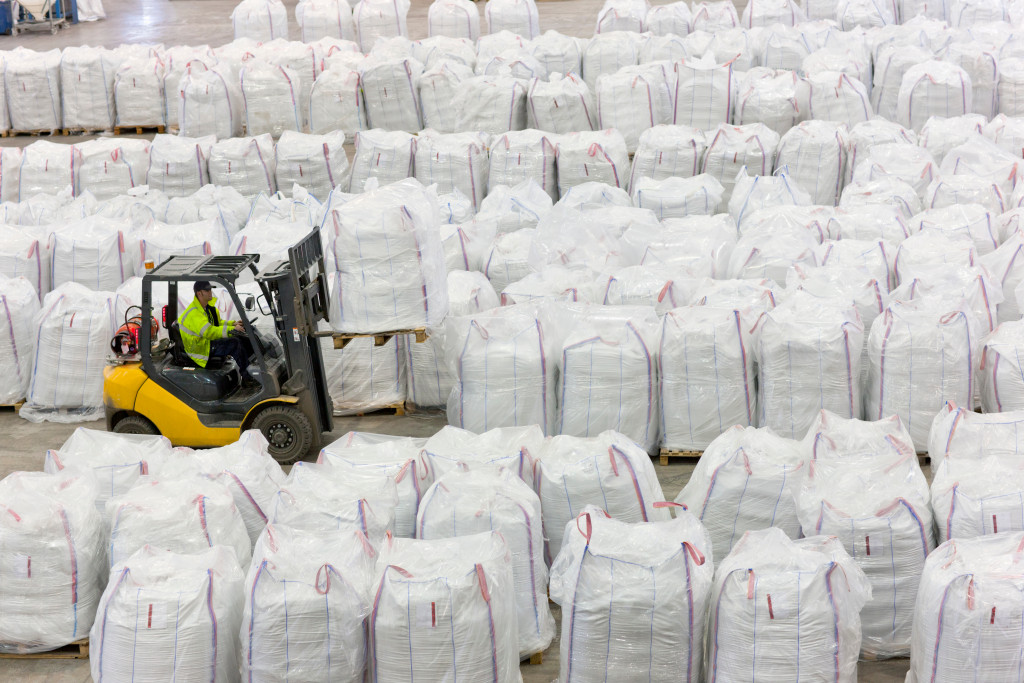A warehouse business can be a very profitable endeavor for entrepreneurs. So many companies require inventory and logistics services, and warehousing is a vital point in the process. As a result, many entrepreneurs bet serious money into creating one for areas without one.
However, it can also be a considerable investment, requires a lot of space and equipment, and needs to be managed to run smoothly. Because of all these factors, protecting your warehouse equipment should be a top priority. Here are some steps you can take to prolong the life of your warehouse equipment and keep it in good working condition.
Warehouse Maintenance and Repairs
The first step to protecting your warehouse equipment is to keep up with regular maintenance and repairs. The strategy may seem like a no-brainer, but it’s essential to keep your warehouse in good condition so that your equipment can function correctly. The step-by-step process means regularly checking for leaks, fixing any electrical or plumbing issues, and keeping the floors clean and free of debris.
It would help if you also created a schedule for routine maintenance tasks like cleaning the gutters and replacing air filters. By staying on top of these tasks, you can avoid more significant problems down the road and keep your warehouse running smoothly.
In addition to regular maintenance, you should also be prepared to handle repairs as they come up. Many warehouses use heavy machinery and equipment, so it’s essential to plan when something breaks down.
Create a Maintenance Schedule
One of the best ways to protect your warehouse equipment is to create a maintenance schedule. This schedule should include all of the regular tasks that need completion and any repairs. By having a plan in place, you can ensure that everything is taken care of on time and avoid surprises.
Your maintenance schedule should be tailored-fit to your specific warehouse and equipment. You’ll need to consider the size of your space, the type of equipment you use, and how often you use it. You can create a realistic schedule to keep your warehouse running smoothly with this information.
Invest in Quality Equipment
Another way to protect your warehouse equipment is to invest in quality products. It can be tempting to cut corners and purchase cheaper equipment when you’re first starting. However, this is often a false economy because low-quality equipment is more likely to break down and need repairs. In the long run, it’s better to invest in higher-quality items that will last longer and require less maintenance.
It would help if you also considered investing in insurance for your warehouse equipment. It can help cover the cost of repairs or replacement if something breaks down. While it’s an additional expense, it can give you peace of mind knowing that your investment is protected.
Equipment Protection Measures

In addition to maintaining your warehouse and investing in quality equipment, you should also explore other measures for protecting your gear. For example, if your warehouse is used by forklifts or other heavy machinery, installing a safety barrier can help prevent accidents and keep workers safe. You may also consider storing expensive items in a climate-controlled space that won’t be affected by extreme temperatures or humidity.
Protection sleeves also ensure that your equipment remains safe from dust, spillage, debris, and other particles that could deteriorate and rust.
Rust can instantly kill any warehouse equipment. The maintenance team should always observe if there are any signs of rust. Fortunately, protective sleeves can ensure that rust won’t be an issue for a long time. By taking these extra steps, you can further prolong the life of your warehouse equipment and keep it in good condition.
Proper Storage and Handling
Another critical factor in protecting your warehouse equipment is proper storage and handling. Many items in a warehouse are delicate or breakable, so it’s essential to handle them with care. It means creating a system for how things are stored and ensuring that they’re properly labeled.
It’s also essential to train your employees on the proper way to handle and store items. By taking these precautions, you can avoid damage to your equipment and keep your warehouse running smoothly.
Conclusion
Protecting your warehouse equipment is essential for prolonging its life and keeping your business running smoothly. By following these tips, you can create a plan for regular maintenance and be prepared to handle repairs as they come up. You should also invest in quality equipment and take extra measures to protect your investment. With proper care, you can keep your warehouse equipment in good condition for years to come.
